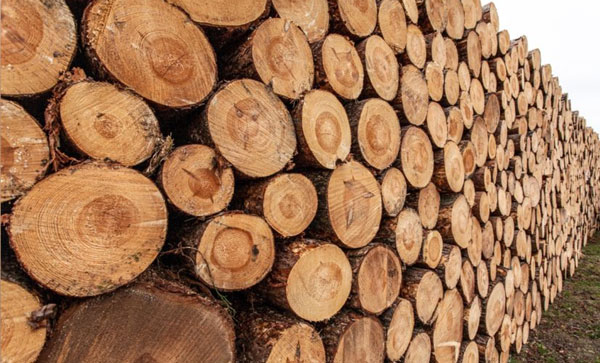
A surge in construction activity in Africa is drawing a new breed of investors eyeing mass timber – and the carbon-trapping forests needed to support it – as a sustainable building alternative to traditional concrete and steel.
Wooden buildings like the engineered timber construction planned for the world’s tallest wood building in Zanzibar may only be starting to appear in cities worldwide but that is not stopping investors from betting on wood becoming a key building block in African construction.
“About 200 years ago, everyone was building with timber, then it shifted to cement, steel, and stones. Now people are going back, especially with modern housing,” explained Karl Kirchmayer, co-founder and managing partner at ASC Impact.
Although wood buildouts in major cities and towns are hardly in the main stream, the trajectory, based on recent commercial activity, leans towards a timber-centric future, according to ASC.
In October 2022 the Burj Zanzibar was unveiled on the East African archipelago as the world’s tallest hybrid timber structure. Due for completion in 2026, it is located in Fumba Town, Zanzibar’s pioneering eco-town developed by the German-led engineering firm CPS.
A growing interest in wood is fueled by its sustainability credentials and the increasing global emphasis on reducing the carbon intensity of the construction sector.
According to Energy Monitor, replacing energy-intensive building materials with timber prevent more than 100 billion metric tons of carbon dioxide entering the atmosphere by the end of the century.
According to Kirchmayer, the popularity of hybrid housing units, where concrete is used only for the foundations and timber for the majority of the structure, is also set to gain in popularity due to faster construction times.
With vast lands conducive to tree growth, Kirchmayer and ASC Impact believe that Africa is ripe for reforestation initiatives that support mass timber production and other green projects.
“The best way to sequester carbon is by planting new forests, particularly across vast surfaces. Utilizing these trees for timber means the carbon is sequestered in the buildings, replacing steel and cement. This carbon remains bound as long as the structure stands,” he said.
Substituting all the imports of sawn wood and construction wood is where they see the biggest benefit.
“So we want to produce the construction wood for the inland market. With new plantations and forests and sustainable forestry, you create not only the timber and sustainable construction material but also a lot of sequestration, substituting steel and cement,” he explained.
Already, ASC has concessioned over 300,000 hectares for reforestation and is targeting an investment of €400 million in the coming years.
To avoid pushback from governments apprehensive about allocating land solely for forestation, ASC Impact is integrating agriculture and carbon offset projects into their offerings.
“So we are planting for inland consumption… we are planting corn, soybeans, sunflowers, and various other crops,” he said.
“Communities and governments are much more open to investments in agriculture than to only carbon sequestration or reforestation projects. So we have not only the agricultural revenue, but also the timber revenues after a very long period, and we are also selling carbon credits.”
This model has resonated with investors.
Kirchmayer notes that one of the key challenges facing mass timber adoption in Africa is the existing regulatory framework, which often favours energy-intensive construction methods.
However, progressive policy changes and increasing awareness of sustainable building practices are beginning to pave the way for greater acceptance of mass timber. Early adopters in countries like Kenya and South Africa are setting precedents, showcasing the feasibility and benefits of mass timber structures.
“I know this is a cultural thing and also a development thing in the way that people think that higher quality construction is with concrete and cement,” he said.
ASC Impact, with a footprint in Congo Brazzaville, Ethiopia, and Angola, is not the only company trying to ensure that timber is seen as a building solution for the future, in Africa and elsewhere.
Last year, New Forests, a forestry company based in Australia, raised US$200 million from three investors for its new fund that aims to support sustainable forestry in Africa.
The fund, named the African Forestry Impact Platform (AFIP), is the first fund dedicated to Africa by New Forests. The fund has a target of raising US$500 million in the next two to three years.
****
SOURCE: Seth Onyango, bird story agency
 The Independent Uganda: You get the Truth we Pay the Price
The Independent Uganda: You get the Truth we Pay the Price



